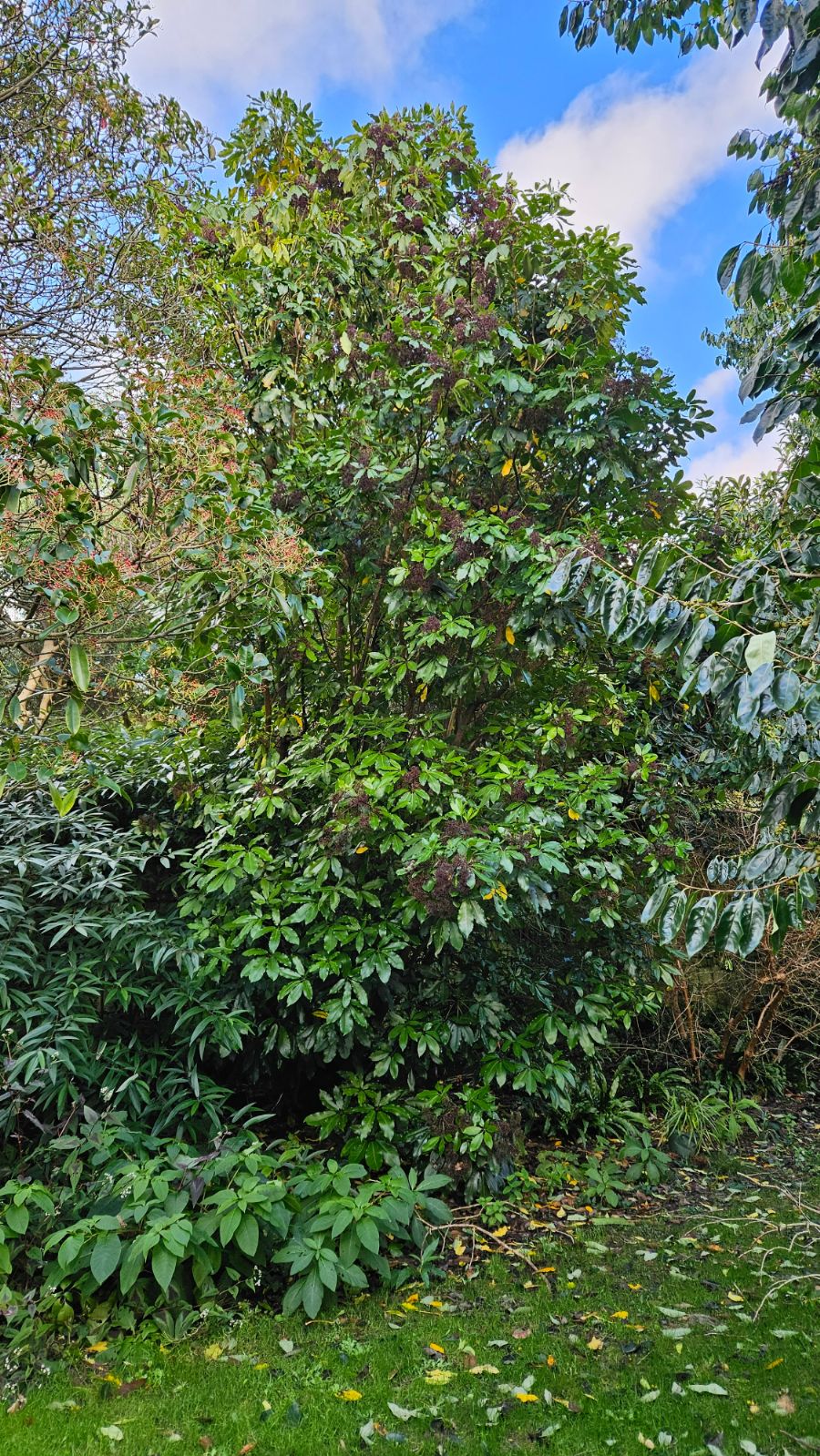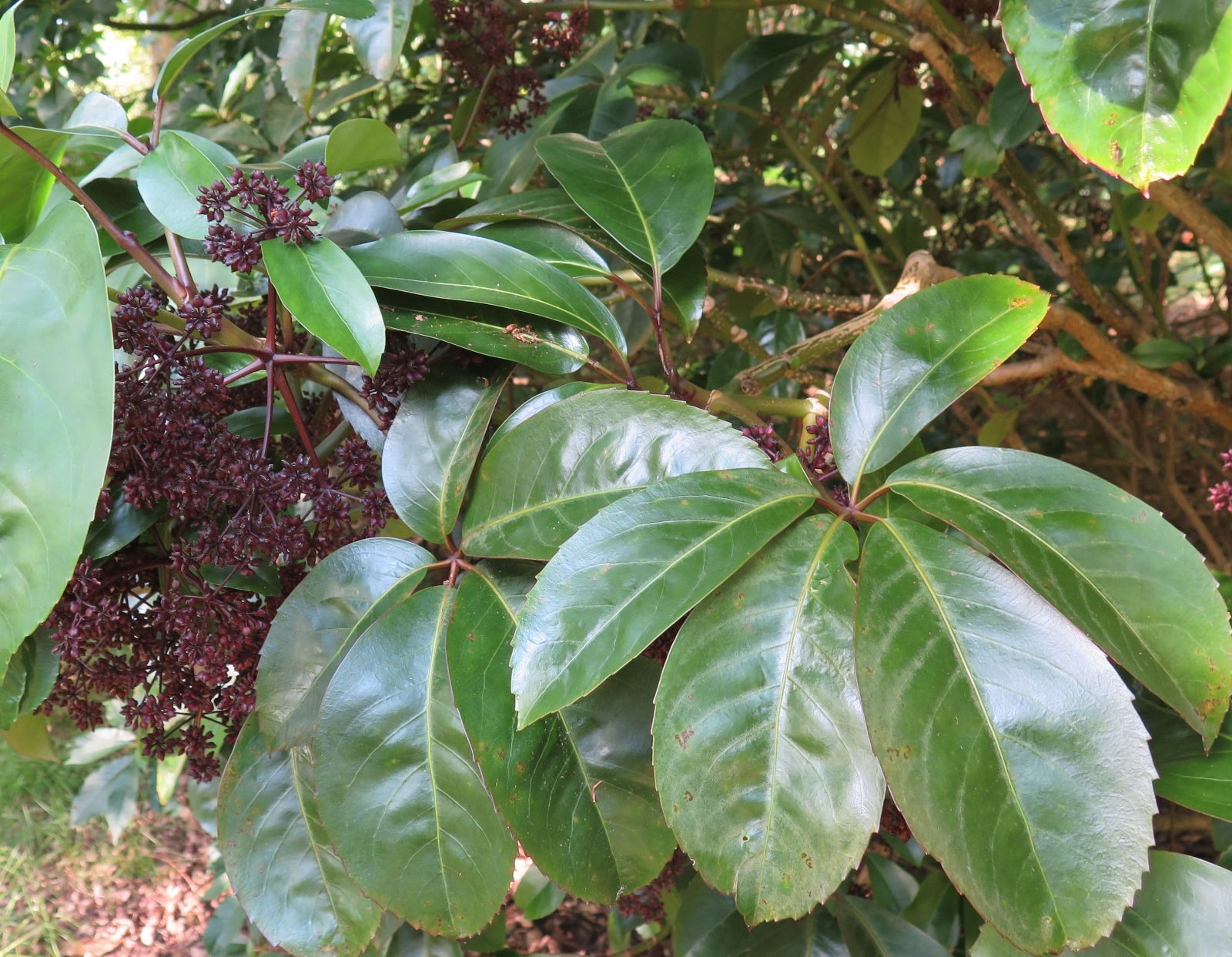Neopanax
Credits
John Grimshaw and Ross Bayton, New Trees (2009)
Recommended citation
Grimshaw, J., Bayton, R. (2009), 'Neopanax' from the website Trees and Shrubs Online (treesandshrubsonline.
Family
- Araliaceae
Neopanax was split from Pseudopanax by Allan (1961) and comprises five species in New Zealand and the Kermadec Islands (Frodin et al. 2003). The primary difference between the two genera lies in the ovary, which has two locules (Neopanax) or three to five locules (Pseudopanax). For the amateur botanist this character is difficult to assess, and a more useful guide is the style, which has two branches (Neopanax) or three to five branches (Pseudopanax) (Allan 1961). Neopanax species are small trees or shrubs with stipulate compound leaves. In some species the leaves have distinct adult and juvenile forms: juvenile leaves have 3–12 leaflets, but adult leaves typically have a single leaflet. Neopanax is monoecious or dioecious with flowers in simple or compound umbels. The individual flowers are 5-merous and rather insignificant. The fruit is dry and slightly compressed.
The current popularity of exotic foliage plants, in the United Kingdom at least, has led to the development of great interest in woody evergreen members of the Araliaceae, amongst which are the genera Dendropanax, Eleutherococcus, Fatsia, Meryta, Metapanax, Neopanax, Pseudopanax, Schefflera and Tetrapanax, all of which produce attractive and sometimes magnificent foliage from shrubs or small trees. The inclusion of the word panax in a name should automatically excite interest; the shuffling of species between prefixes, however, has led to a proliferation of synonyms, and tracking these through the literature and catalogues requires a certain mental flexibility. Although some members of Neopanax are remarkably hardy, others are distinctly tender, and most need some shelter to preserve the large leaves from wind damage. Ample moisture, but with good drainage, is appreciated in the growing season.
The genus is perhaps most familiar in the form of Neopanax arboreus (syn. Pseudopanax arboreus) – a handsome evergreen shrubby small tree, closely related to N. laetus but hardier, and grown for many years in mild gardens. Another species that may appear in gardens or catalogues is N. colensoi (Hook. f.) Allan, another New Zealand native but smaller in stature. Johnson (2007) records a specimen 2 m tall in Tim Pyner’s garden in Southend, Essex. Propagation is by sowing fresh seed or taking cuttings, which root readily. (Grimshaw & Bayton 2009)


